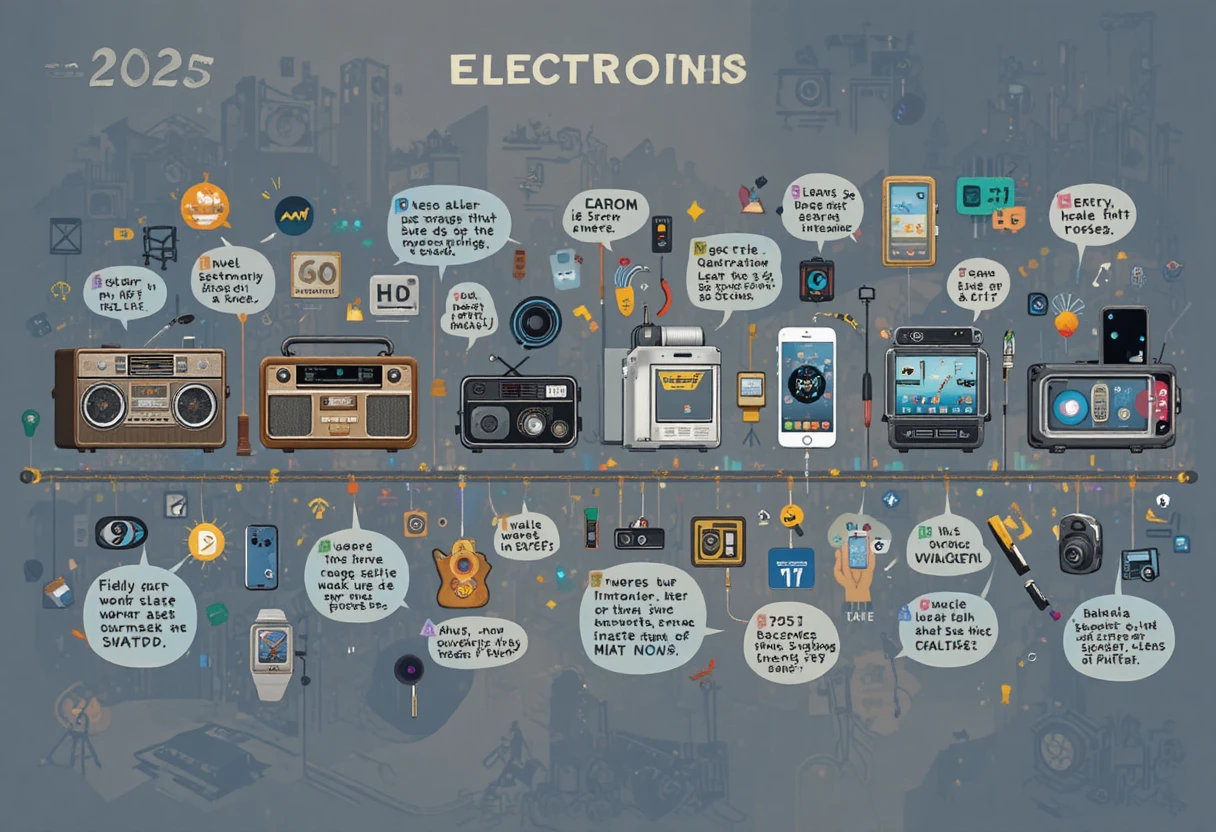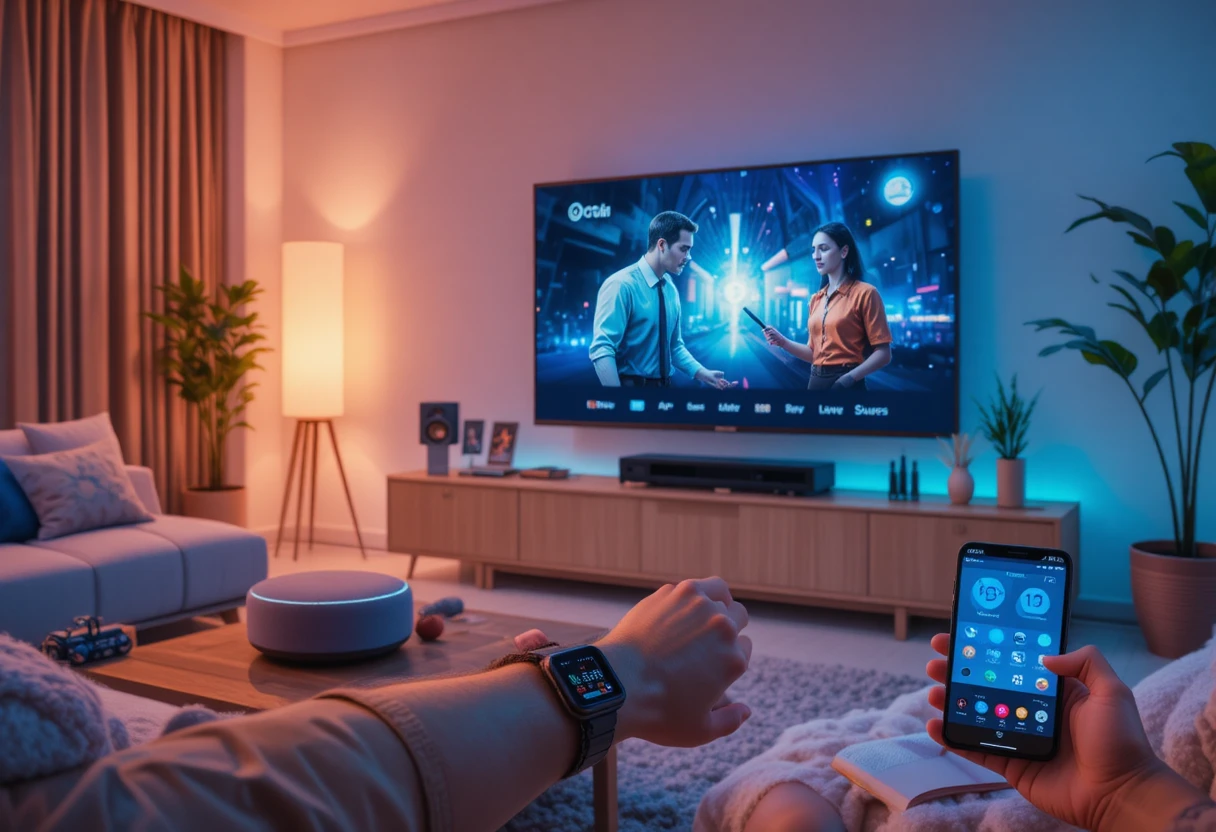Consumer electronics have become an integral part of modern society, shaping how we communicate, entertain ourselves, work, and even manage our homes. From the humble beginnings of radios and televisions to the sophisticated smart devices of today, this industry has evolved at a breakneck pace. As of October 2025, consumer electronics encompass a vast array of products, including smartphones, wearables, smart home systems, and advanced audio-visual equipment. This post delves into the history, current trends, key categories, societal impacts, future prospects, and challenges of consumer electronics, providing a comprehensive overview of this dynamic field.
Introduction to Consumer Electronics
Consumer electronics refer to electronic devices designed for everyday use by individuals, typically for entertainment, communication, or productivity. Unlike industrial or professional equipment, these gadgets are user-friendly, affordable, and widely accessible. The global market for consumer electronics is booming, with projections estimating it to reach over $1.5 trillion by the end of 2025, driven by innovations in artificial intelligence (AI), connectivity, and sustainability.
The appeal of consumer electronics lies in their ability to simplify life. For instance, a single smartphone can replace a camera, music player, GPS, and even a wallet. This convergence of functions has led to what experts call “device ecosystem integration,” where products from the same brand seamlessly interact. Companies like Apple, Samsung, and Google dominate this space, constantly pushing boundaries with new features.
In 2025, the rise of the Internet of Things (IoT) has further blurred the lines between devices. Your refrigerator can now order groceries, your watch can monitor your health in real-time, and your lights can adjust based on your mood. This interconnectedness not only enhances convenience but also raises questions about privacy and security, which we’ll explore later.
History and Evolution
Early Beginnings
The roots of consumer electronics trace back to the late 19th and early 20th centuries. The invention of the radio by Guglielmo Marconi in 1895 marked the dawn of mass communication devices. By the 1920s, radios became household staples, allowing families to listen to news and music from afar. This era also saw the emergence of phonographs, which evolved into record players, bringing personalized audio entertainment into homes.
Television followed suit in the 1930s, with commercial broadcasts starting in the 1940s. Black-and-white TVs gave way to color models in the 1960s, revolutionizing visual entertainment. These early devices were bulky, analog, and limited in functionality, but they laid the foundation for the digital revolution. The transistor, invented in 1947 by Bell Labs, was a pivotal breakthrough, enabling smaller, more efficient electronics.
By the 1970s, consumer electronics began to diversify. The introduction of the VCR (Video Cassette Recorder) in 1975 allowed people to record and replay TV shows, shifting control from broadcasters to viewers. Personal computers, like the Apple II in 1977, brought computing power to homes, though they were initially seen as gadgets for hobbyists rather than essentials.
The Digital Age
The 1980s and 1990s ushered in the digital era. Compact Discs (CDs) replaced vinyl records and cassettes, offering superior sound quality. Camcorders and portable music players, like Sony’s Walkman in 1979, made media mobile. The internet’s commercialization in the 1990s transformed everything; email and web browsing became possible on home computers.
The turn of the millennium saw explosive growth. MP3 players, led by Apple’s iPod in 2001, digitized music libraries. Digital cameras supplanted film-based ones, and flat-screen TVs with LCD and plasma technology slimmed down living rooms. The smartphone era began with the BlackBerry in the early 2000s, but Apple’s iPhone in 2007 truly democratized touch-screen, app-based devices.
From 2010 onward, tablets like the iPad, smart TVs, and streaming devices (e.g., Roku, Amazon Fire Stick) dominated. Wearables emerged with fitness trackers like Fitbit in 2009, evolving into smartwatches. By 2025, we’ve seen the integration of AI, voice assistants (Alexa, Siri, Google Assistant), and augmented reality (AR) in everyday gadgets.

Key Categories of Consumer Electronics
Smartphones and Mobile Devices
Smartphones are the cornerstone of consumer electronics in 2025. These pocket-sized computers handle calls, texts, internet browsing, photography, gaming, and more. Leading models like the iPhone 17 series and Samsung Galaxy S25 boast foldable screens, under-display cameras, and AI-driven features such as real-time language translation and personalized health insights.
Battery life has improved dramatically, with graphene-based batteries offering all-day usage and ultra-fast charging. 5G connectivity is standard, enabling seamless streaming and cloud gaming. Accessories like wireless earbuds (e.g., AirPods Pro 3) and portable chargers enhance the ecosystem.
Tablets and e-readers fall under this category too. The iPad Pro with M4 chip excels in productivity, while Kindle devices provide distraction-free reading with e-ink displays that mimic paper.
Wearables
Wearable technology has exploded in popularity, focusing on health and fitness. Smartwatches like the Apple Watch Series 11 and Samsung Galaxy Watch 8 monitor heart rate, ECG, blood oxygen, and even detect falls or irregular heartbeats. In 2025, advanced models incorporate non-invasive glucose monitoring for diabetics, a game-changer for health management.
Fitness trackers, such as Garmin’s Vivosmart 6, track steps, sleep, and workouts with AI coaching. AR glasses, like Meta’s Orion prototypes, overlay digital information on the real world, useful for navigation or virtual meetings. Hearables, including smart earbuds with noise cancellation and built-in assistants, blend audio with biometrics.
Smart Home Devices
Smart homes represent the pinnacle of IoT in consumer electronics. Devices like Amazon Echo and Google Nest Hub act as central hubs, controlling lights, thermostats, and security cameras via voice commands. Philips Hue bulbs adjust color and brightness, while Nest Thermostats learn your habits to optimize energy use.
Security systems, including Ring doorbells with 4K video and AI person detection, provide peace of mind. Robotic vacuums like iRobot Roomba j9+ navigate homes autonomously, avoiding obstacles with LiDAR. In 2025, integration with electric vehicles (EVs) allows your home to communicate with your car for charging schedules.
Audio and Visual Equipment
Audio-visual gadgets continue to thrive. Wireless speakers from Sonos offer multi-room audio with high-fidelity sound. Noise-cancelling headphones, like Bose QuietComfort Ultra, immerse users in music or podcasts.
Televisions have advanced to 8K resolution with OLED and MicroLED panels for stunning visuals. Streaming devices support Dolby Vision and Atmos for cinematic experiences at home. Gaming consoles, such as the PlayStation 6 and Xbox Series Z, deliver ray-traced graphics and VR compatibility, blurring lines between consoles and PCs.

Current Trends in 2025
AI Integration
AI is ubiquitous in consumer electronics by 2025. Devices use machine learning for predictive features, like smartphones suggesting apps based on routines or smart fridges inventorying food and suggesting recipes. Voice assistants have evolved to understand context and emotions, making interactions more natural.
Edge AI processes data on-device for faster responses and better privacy. In gaming, AI generates dynamic worlds, while in photography, it enhances images in real-time, removing imperfections or simulating professional lighting.
Sustainability
Environmental concerns drive sustainable practices. Manufacturers like Apple aim for carbon neutrality, using recycled materials in devices. Solar-powered gadgets, biodegradable cases, and modular designs (e.g., Fairphone) reduce e-waste. Energy-efficient chips and longer-lasting batteries minimize environmental impact.
Consumers prioritize eco-friendly products, with certifications like Energy Star becoming standard. Repairability scores influence buying decisions, pushing companies to offer easy-to-fix devices.
5G and Beyond
5G networks enable ultra-low latency for AR/VR applications and remote work. In 2025, 6G research promises even faster speeds and holographic communication. Wi-Fi 7 standards ensure robust home connectivity for multiple devices.
Foldable and rollable screens expand device versatility, while haptic feedback improves touch interactions. Quantum dots in displays offer vibrant colors with lower power consumption.
Impact on Society
Consumer electronics have profoundly influenced society. They’ve democratized information access, fostering global connectivity through social media and video calls. Education benefits from tablets and e-learning tools, making knowledge available anytime.
However, they’ve also contributed to digital divides, where not everyone can afford the latest gadgets. Mental health concerns arise from screen addiction, with features like Apple’s Screen Time helping mitigate this. Economically, the industry creates jobs in manufacturing, software development, and retail.
Culturally, streaming services have shifted entertainment from linear TV to on-demand content, empowering creators on platforms like YouTube and TikTok. In healthcare, wearables enable preventive medicine, potentially reducing hospital visits.
Future Prospects
Looking ahead, consumer electronics will integrate more deeply with biotechnology and neuroscience. Brain-computer interfaces (BCIs), like Neuralink’s prototypes, could allow thought-controlled devices. Holographic displays might replace screens, creating immersive 3D experiences.
Sustainability will advance with fully recyclable electronics and AI-optimized energy use. Metaverse integration will blend virtual and physical worlds, with gadgets serving as portals. Quantum computing in consumer devices could solve complex problems instantly, from personalized medicine to climate modeling.
Autonomous robots for household chores and AI companions for the elderly promise to enhance quality of life. However, ethical AI development will be crucial to avoid biases and ensure inclusivity.

Challenges and Considerations
Despite advancements, challenges persist. Privacy issues loom large with data collection by smart devices; regulations like GDPR and emerging AI laws aim to protect users. Cybersecurity threats, such as hacking smart homes, necessitate robust encryption.
E-waste is a growing problem, with billions of devices discarded annually. Supply chain vulnerabilities, exposed during the 2020s chip shortages, highlight the need for diversified manufacturing.
Affordability remains a barrier; while prices drop over time, cutting-edge tech is often premium. Health impacts, like blue light from screens affecting sleep, drive innovations in eye-friendly displays.
In conclusion, consumer electronics continue to evolve, offering unprecedented convenience while posing new challenges. As we navigate this landscape in 2025 and beyond, balancing innovation with responsibility will be key to a tech-enhanced future.